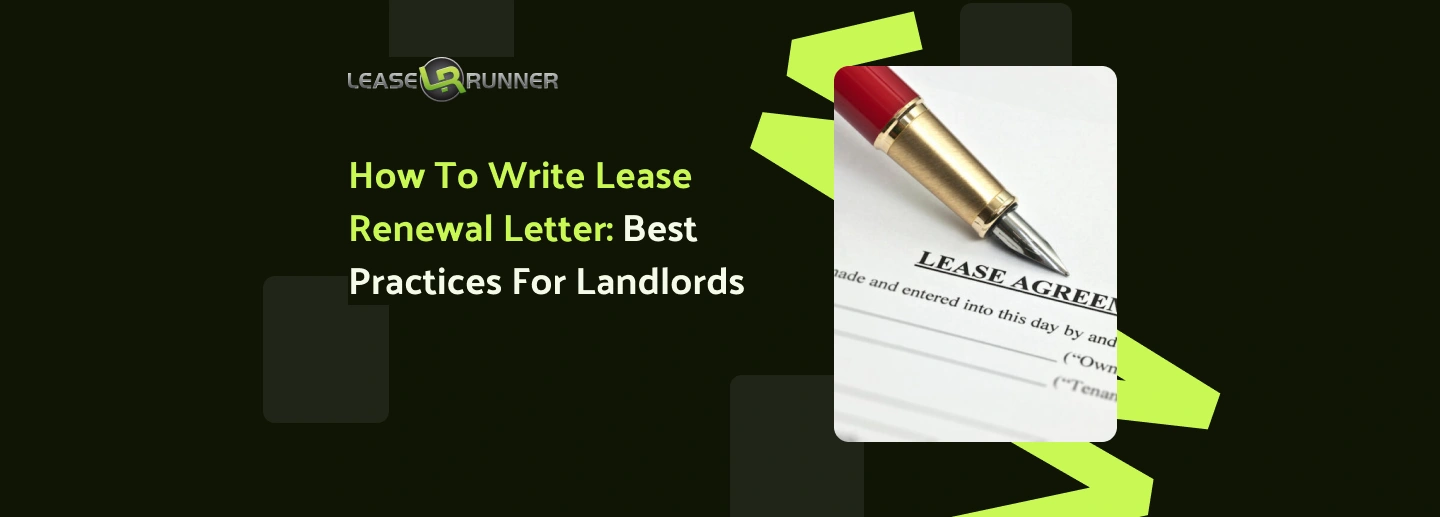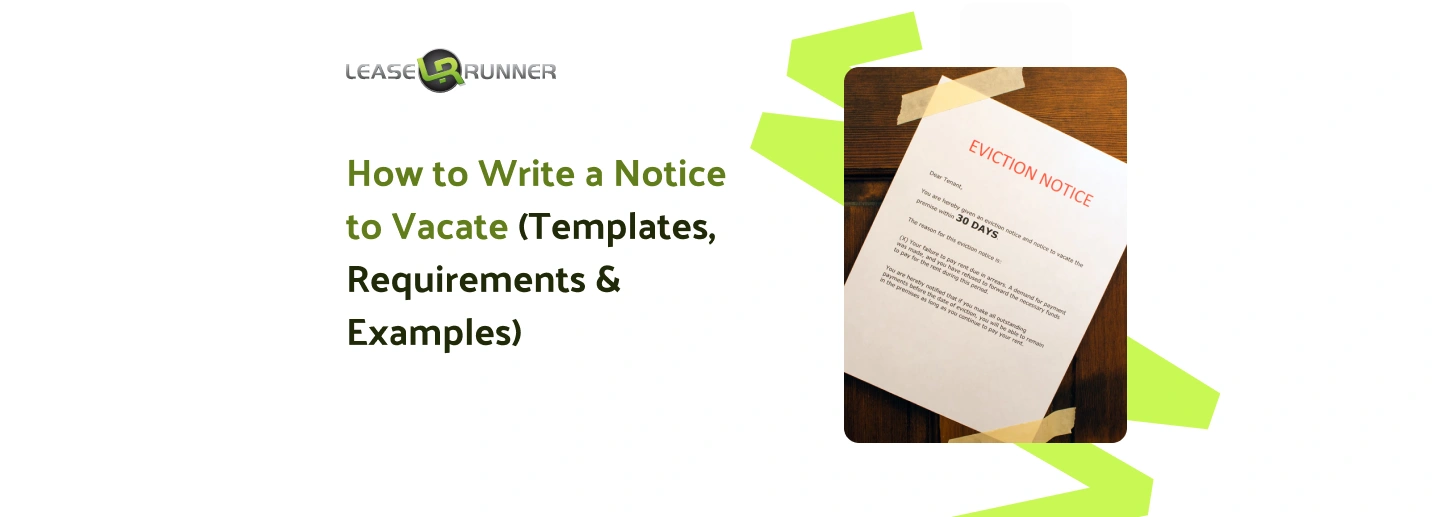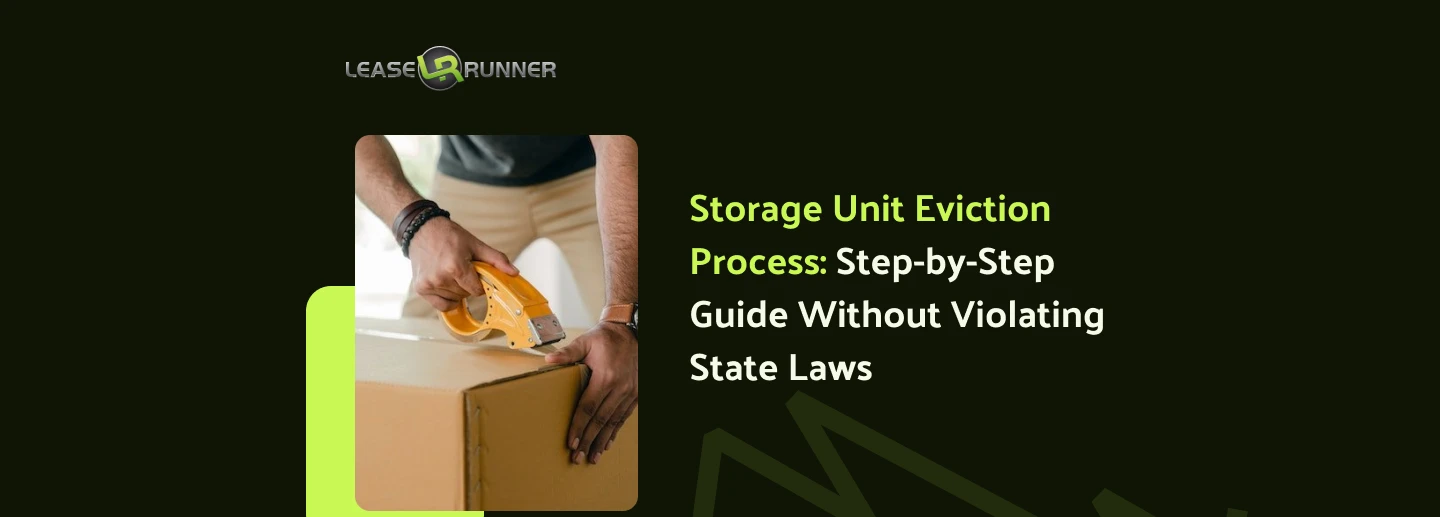Handling problem tenants is one of the toughest parts of being a landlord. But once you know how to write an eviction notice, the process becomes far less intimidating. In this guide, you’ll find practical steps and ready-to-use templates that help you move forward with confidence.
What Is an Eviction Notice and Why Do You Need One?

An eviction notice is a formal written communication from a landlord to a tenant, indicating that the landlord intends to terminate the tenancy. It serves as the first step in the legal eviction process, providing the tenant with an opportunity to address the issue or vacate the property before further legal actions are taken.
Importance of an Eviction Notice
- Legal Requirement: In many regions, landlords are legally obligated to provide a written notice before initiating formal eviction proceedings. This ensures that tenants are informed and have a chance to rectify the situation or prepare for relocation. For specific rules, see just cause eviction in California and Section 8 housing eviction.
- Documentation: An eviction notice serves as official documentation that can be presented in court if the matter escalates to legal proceedings.
- Tenant Awareness: It alerts tenants to potential issues with their tenancy, allowing them to address problems promptly and avoid eviction.
When Can You Legally Evict a Tenant?
Evicting a tenant is not simply a matter of personal preference or frustration; landlords must have a legally valid reason and follow proper procedures. Eviction laws exist to protect both tenants and landlords, ensuring fairness and clarity. Below are the main situations in which a legal eviction can occur:
Non-Payment of Rent
One of the most common reasons for eviction is consistent non-payment of rent. If a tenant fails to pay rent on time, landlords can issue a formal eviction notice, typically called a "Notice to Pay or Quit," which gives the tenant a set number of days to settle the overdue rent or vacate the property. For more on this, see how long does an eviction take. Documentation of missed payments and proper notice is essential to enforce this legally.
Lease Violations or Clause Breach
Tenants are expected to comply with the terms of their lease. Violations such as having unauthorized pets, subletting without permission, or causing property damage—can justify eviction. In these cases, landlords usually issue a "Notice to Cure or Quit," giving tenants an opportunity to correct the issue. Failure to remedy the violation within the specified time frame may lead to formal eviction proceedings.
End of Lease or Eviction Without a Lease Agreement
Eviction is also possible when a lease ends and is not renewed, or when there is no formal lease agreement. For month-to-month rentals or informal arrangements, landlords must still provide proper notice according to local regulations, which often ranges from 30 to 60 days. Adhering to notice periods and documenting communication is critical to avoid legal complications.
Eviction Letter for a Family Member or Friend
Evicting a family member requires sensitivity and legality. A clear eviction letter family member should state the reason for eviction, the final date to move out, and reference applicable tenancy legislation. This prevents disputes and legal complications.
What Does an Eviction Notice Look Like?
An eviction notice is a formal, written document that a landlord gives to a tenant to begin the process of ending a tenancy. This is not just a casual warning; it’s a required legal document that sets the stage for a landlord to file a lawsuit in court. An improperly prepared notice can lead to a court dismissing the landlord's case, forcing them to start the process over.
Key Elements Included in an Eviction Notice
An eviction notice typically includes the following information:
- Tenant and Landlord Details: Names and contact information of both parties.
- Property Address: The full address of the rental property.
- Reason for Eviction: A clear statement of why the eviction is occurring (e.g., non-payment of rent, lease violations).
- Legal Notice Period: The specific timeframe the tenant has to either fix the issue or move out, as required by state and local laws. This can range from 3, 5, 10, 30, or even 60 days, depending on the eviction notice type and the state.
- Final Date to Vacate: The specific date by which the tenant must leave the premises.
- Reference to Local Law or Tenancy Legislation: Citations of relevant state or local laws supporting the eviction.
- Delivery Method: How the notice was delivered to the tenant (e.g., certified mail, hand delivery, posting on the property).
Common Types of Eviction Notices
There are several types of eviction notices, each used for a specific situation.
Notice to Pay Rent or Quit
A Notice to Pay Rent or Quit is used when a tenant fails to pay rent on time. This notice informs the tenant that they must either pay the overdue rent within a legally specified timeframe—often three to five days depending on the state or vacate the property.
For example, in California, a landlord can issue a 3-Day Notice to Pay Rent or Quit under California Code of Civil Procedure Section 1161(2). This notice is appropriate when a tenant consistently fails to pay rent despite reminders.
Sample Template:
Notice to Cure or Quit
The Notice to Cure or Quit addresses lease violations that the tenant can remedy, such as unauthorized pets, excessive noise, or subletting without permission. The notice specifies the violation and provides a deadline to correct it. If the tenant fails to cure the violation within that period, the landlord may proceed with eviction.
For instance, in Virginia, under the Code of Virginia § 55.1-1245, a landlord can issue a 21/30-Day Notice for a "remediable" lease violation. This gives the tenant 21 days to correct the violation; if not corrected, the tenancy will terminate in 30 days.
Sample Template:
Unconditional Quit Notice
An Unconditional Quit Notice is more severe and demands the tenant vacate the property without the option to remedy the situation. This notice is typically used for serious violations, such as illegal activity on the premises.
In Oregon, under the Oregon Landlord-Tenant Act § 90.396(1), a landlord can issue a 24-Hour Notice to Quit if a tenant's actions cause a serious danger to the property or the safety of others, or involve illegal conduct.
Sample Template:
Notice of Termination (Month-to-Month Tenancy)
A Notice of Termination is used to end a month-to-month tenancy. The landlord provides a set notice period—commonly 30 days, though this varies by state—to allow the tenant to vacate.
For example, in New York, state law requires landlords to give tenants a written notice 30, 60, or 90 days before the tenancy ends, depending on how long the tenant has lived there:
- Less than 1 year: 30 days' notice.
- 1 to 2 years: 60 days' notice.
- More than 2 years: 90 days' notice.
Sample Template:
How to Write an Eviction Notice That Holds Up in Court: 7 Steps Guide
Follow these 7 steps to create an eviction notice that meets legal requirements, clearly states the reason and deadlines, and provides the documentation needed if the case goes to court.
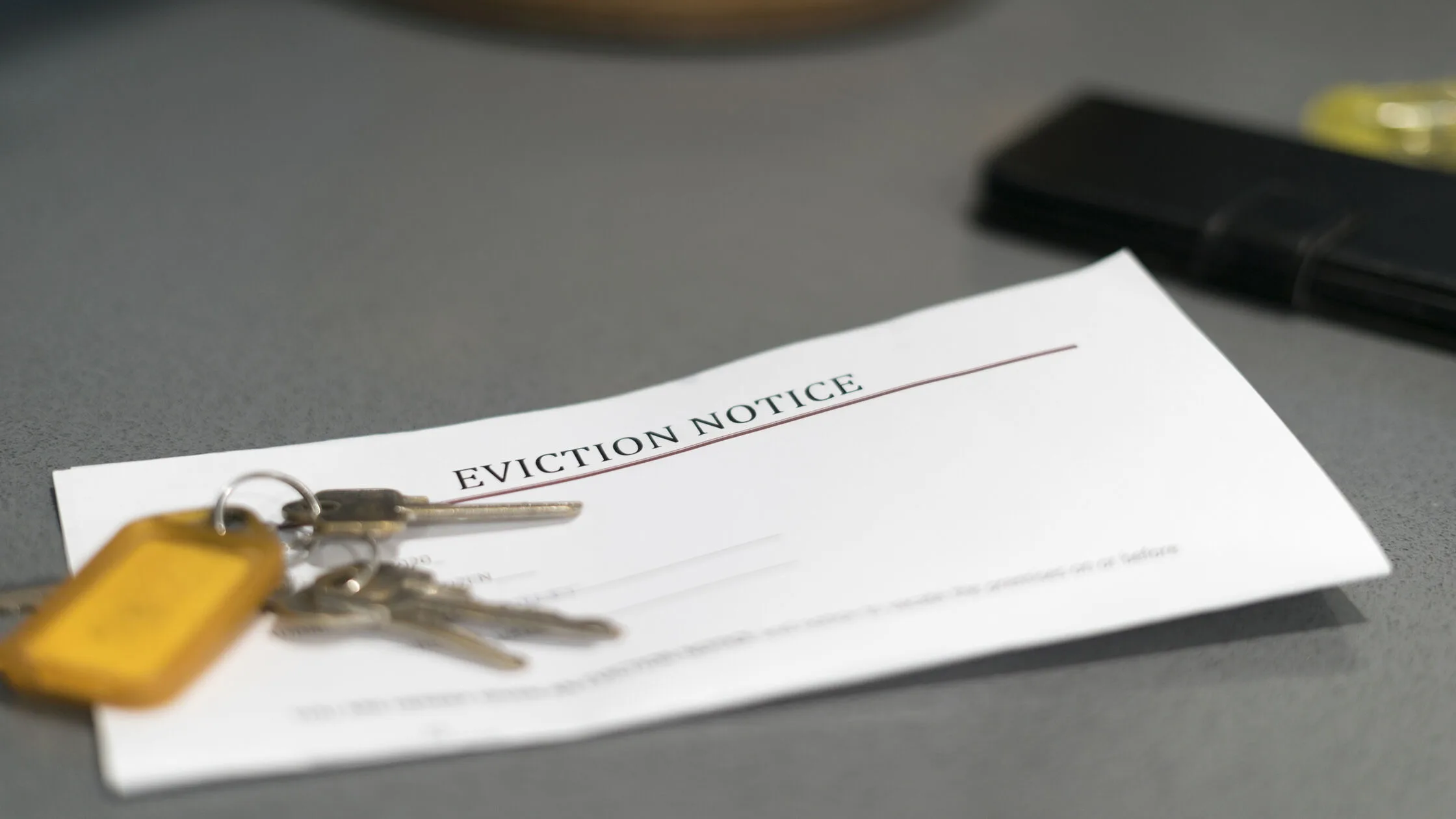
Step 1: Confirm You Have Legal Grounds
Before you begin, confirm you have legal grounds; this is the foundation of how to write an eviction notice correctly.
Common Legal Grounds:
- Non-payment of rent.
- A significant breach of the lease agreement (e.g., having an unauthorized pet, causing major property damage).
- The end of the tenancy (typically for month-to-month or fixed-term leases).
- Engaging in illegal activities on the property.
Example: In California, you generally cannot evict a tenant without a "just cause eviction" for certain tenancies, as outlined in the California Tenant Protection Act. This prevents landlords from evicting tenants for arbitrary reasons.
Step 2: Reference the Lease Agreement or Tenancy Law
A valid eviction notice should cite either the specific lease clause the tenant violated or the applicable state statute. This ensures the notice is enforceable and not just a general statement.
Be Specific:
- "You violate Section [Section Number] of the lease agreement signed on [Date]..."
- "...by failing to pay rent as required by the [State Name] Landlord-Tenant Act, Section [Section Number]."
Example: An eviction notice in Florida should cite Florida Statutes § 83.56, which allows a landlord to serve a 3-day notice to pay rent or quit for non-payment.
Step 3: State the Reason for Eviction Clearly
Clarity is crucial. Do not use vague language. The notice must describe the violation in specific detail.
- Don't Write: "You have violated the lease agreement."
- Do Write: "You have violated the lease agreement by keeping an unauthorized dog on the premises, which is a breach of Paragraph 15: Pet Policy. The dog was observed on [Date] and [Date]."
Step 4: Include a Compliance or Vacate Deadline
The notice must provide a specific timeframe for the tenant to either fix the issue or move out. Compliance or vacate deadlines are non-negotiable in how to write an eviction notice without lease, and must align with local law.
Common Deadlines:
- 3 days: Often used for non-payment of rent (e.g., California, Florida, Nevada).
- 5, 7, 10, or 14 days: Often used for other lease violations.
- 30, 60, or 90 days: Used for terminating month-to-month tenancies, depending on the state's laws (e.g., New York).
Note: If your notice demands the tenant to leave in 3 days when state law requires 5 days, a court could invalidate the notice.
Step 5: Outline Consequences of Non-Compliance
Your notice should state what happens if the tenant ignores it. Usually, this means filing an eviction lawsuit (unlawful detainer) in court. This step is crucial to demonstrate seriousness and protect your legal rights.
Example: A landlord in Florida must specify that if the tenant does not comply with the 3-Day Notice to Pay or Vacate under Fla. Stat. § 83.56(3), the landlord will proceed with filing an eviction complaint.
Step 6: Provide Contact Information for Questions or Resolution
The notice should include the landlord's or property manager's contact information so the tenant can get in touch to resolve the issue. This demonstrates that you are willing to resolve the dispute reasonably and responsibly.
Step 7: Sign and Date the Notice
This is a final, but crucial, step. The eviction notice must be signed by the landlord or an authorized agent and clearly dated. This authenticates the document as an official and legally binding communication.
How to Write an Eviction Notice Without a Lease
When a tenant occupies a property without a formal lease often on a month-to-month or at-will basis—landlords must still follow state laws to remove them legally. Here's a step-by-step guide to writing an eviction notice without a lease that holds up in court:
1. Identify the Tenant and Property
Start with the basics. The notice must be clearly addressed to the tenant and include the full address of the property. This ensures there's no confusion about who the notice is for.
- Header: Clearly state that this is an "Eviction Notice" or "Notice to Vacate."
- Your Information: Your full name and contact information as the landlord.
- Tenant's Information: The full name of the tenant(s).
- Property Address: The complete address of the rental unit.
2. State the Reason for Eviction
Even without a lease, you must have a legal reason for the eviction. The notice should clearly and specifically state the cause.
Common Reasons:
- Non-Payment of Rent: If the tenant is a "tenant-at-will," their failure to pay rent is a valid reason.
- Violation of Verbal Agreement: If you had a verbal agreement (e.g., no pets, no loud parties), you can state that the tenant violated these terms.
- Termination of Tenancy: For a no-cause eviction, you are simply ending the tenancy. This is usually allowed for month-to-month agreements, but the required notice period varies by state.
- Illegal Activities: If the tenant is conducting illegal activities on the property, this is a serious and immediate reason for eviction.
Example: "You have violated the terms of your tenancy by failing to pay rent of $1,500 for September 2025."
3. Reference the Tenancy Type
In the absence of a written lease, it's important to state that the tenancy is either an "at-will tenancy" or a "month-to-month tenancy." This sets the legal framework for the eviction.
Example: "This notice serves to terminate your month-to-month tenancy at the above-referenced property."
4. Provide the Required Notice Period
This is the most critical step and varies significantly by state and local laws. You must give the tenant the legally required amount of time to either correct the violation or move out.
- California: For a month-to-month tenancy where the tenant has resided for less than a year, a landlord must provide a 30-day notice to vacate. If the tenant has lived there for a year or more, a 60-day notice is required.
- New York: For a month-to-month tenancy without a lease, the required notice period depends on the length of the tenancy: 30 days for less than one year, 60 days for one to two years, and 90 days for two years or more.
- Florida: For non-payment of rent, a landlord can give a 3-day notice to pay or quit. For a month-to-month tenancy, the required notice is 15 days prior to the end of the monthly period.
5. Demand Action
Clearly state the action the tenant must take and the final deadline.
- For "Pay or Quit" Notices: "You must pay the full amount of overdue rent, which is $[Amount], by [Date], or vacate the premises."
- For "Termination" Notices: "You are required to vacate the premises and surrender possession to the landlord by [Date]."
6. Include Date and Signature
The notice must be a formal, dated document to be legally valid.
- Date: The date the notice is written and served.
- Signature: Your signature as the landlord or property owner.
7. Delivery Method
The way you deliver the notice is just as important as the content. Many states have specific rules for "service of notice."
Recommended Methods:
- Personal Delivery: Handing the notice directly to the tenant.
- Certified Mail: This provides a paper trail and proof of delivery.
- Posting on the Property: Some states allow you to post the notice on the front door, especially if you can't deliver it personally.
Note: Always document how and when you delivered the notice. Take a photo of the notice on the door or keep the certified mail receipt. This is your proof in court.
8. Keep Copies
Make copies of everything—the notice, your proof of delivery, and any communication with the tenant. This documentation is essential if you need to file an eviction lawsuit (known as an "unlawful detainer" in many states) in court.
Use a compliant notice template and serve it properly—stay protected in every step.
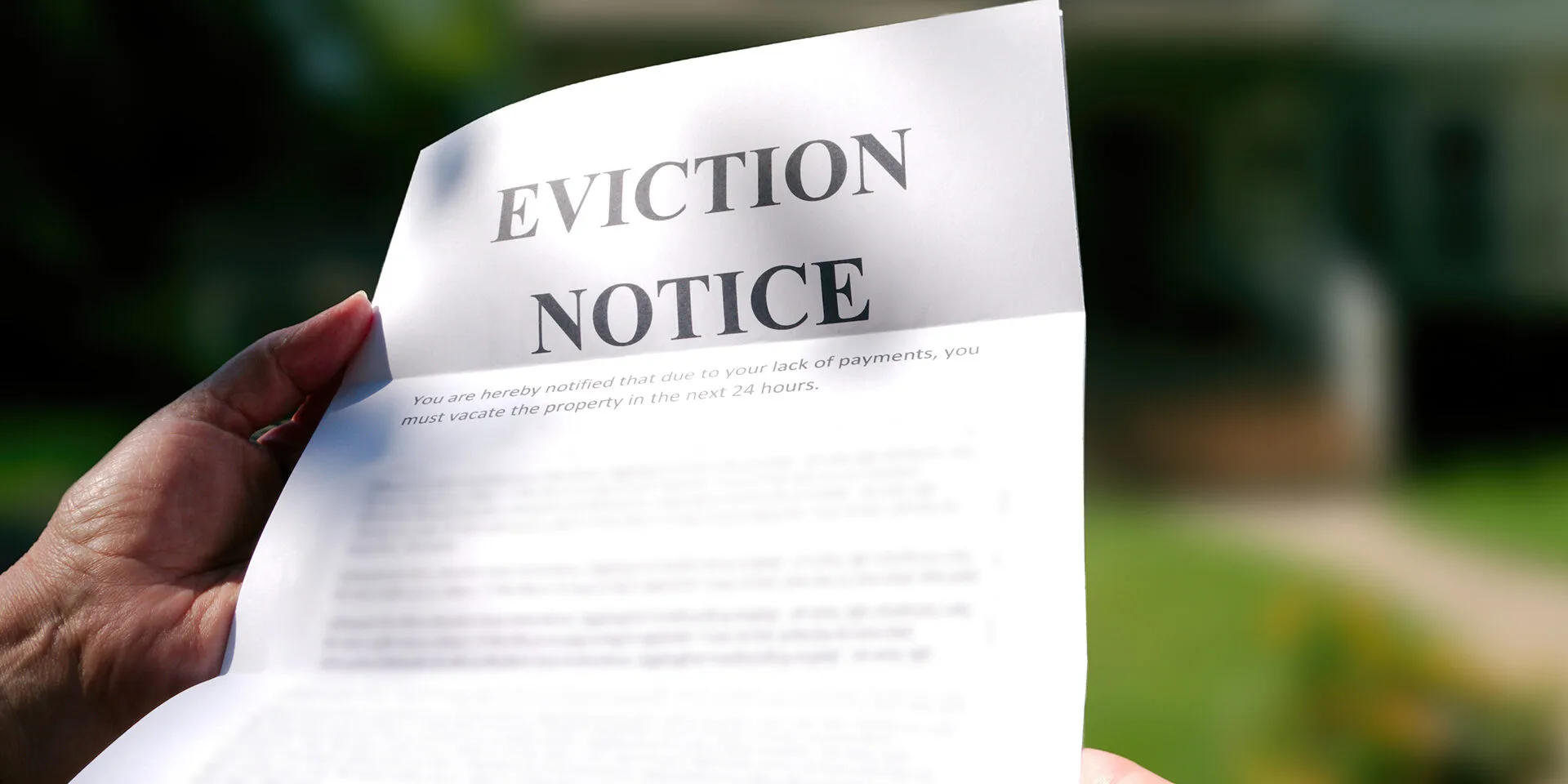
Make Every Eviction Notice Count
How to Evict a Family Member Without a Lease?
Evicting a family member can be one of the most difficult situations a property owner faces. Even when no lease exists, U.S. courts generally treat family members as tenants-at-will or licensees, which means the eviction process must still comply with state landlord–tenant laws.
Determine Legal Status
First, clarify how the family member is classified. In most states, if they live in the home without paying rent, they may be considered a licensee (guest with permission). If they contribute to expenses or pay rent, they may be treated as a tenant-at-will. Courts require this distinction to decide what notice period applies.
Example: In New York, a family member who pays rent but has no lease is usually considered a month-to-month tenant (Real Property Law § 232-b).
Provide Proper Notice
Even without a lease, most states require you to provide a formal written notice to terminate the tenancy. This is the most crucial step and is often called a "Notice to Quit" or "Notice of Termination." The required notice period depends on your state's laws, but common periods are 30, 60, or 90 days.
- California: 30 or 60 days depending on length of occupancy (Cal. Civ. Code § 1946.1).
- Florida: 15 days’ notice for month-to-month tenancies (Fla. Stat. § 83.57).
3. Avoid Self-Help Evictions
Do not attempt to forcibly remove the family member yourself. This is known as a "self-help eviction" and is illegal in every state. It includes:
- Changing the locks.
- Shutting off utilities (water, electricity, gas).
- Removing their personal belongings.
These actions can lead to serious legal consequences, including fines and civil lawsuits from the family member.
Evicting a family member without a lease can be a delicate and legally complex process. The key is to handle the situation carefully to avoid legal trouble and emotional distress.
4. File an Eviction Lawsuit (Unlawful Detainer)
If the family member refuses to leave after the notice period has expired, your next step is to file an eviction lawsuit, often called an "unlawful detainer" action, with the local court. This legal process asks a judge to order the family member to leave.
You will need to provide the court with the following:
- A copy of the written notice you provided.
- Proof that you properly served the notice (e.g., a certified mail receipt or a signed affidavit from the person who delivered it).
- Any evidence that proves the family member's tenant status.
If the court rules in your favor, they will issue a writ of possession (or a similar legal order) which allows law enforcement, such as a sheriff's deputy, to remove the family member from the property. This is the only legal way to force a person to leave your home.
5. Consider Emotional Factors and Communication
Evicting a family member can be emotionally draining. Before taking legal action, try to have a calm and open conversation with them about the situation. You might be able to find a mutually agreeable solution, such as providing them with resources for finding a new place to live or helping them move.
6. Consult Local Laws and Professionals
Landlord-tenant laws vary significantly by state, and even by city or county. It's highly recommended to consult a real estate lawyer specializing in evictions. They can provide guidance tailored to your specific situation and ensure you follow all legal requirements.
7. Keep Records
Throughout the entire process, keep detailed records of everything. This includes:
- Copies of all written notices.
- Dates and times of all communication.
- Proof of notice delivery.
- Any correspondence from the family member.
These records will be vital evidence if your case goes to court.
5 Common Mistakes That Could Invalidate Your Eviction Notice
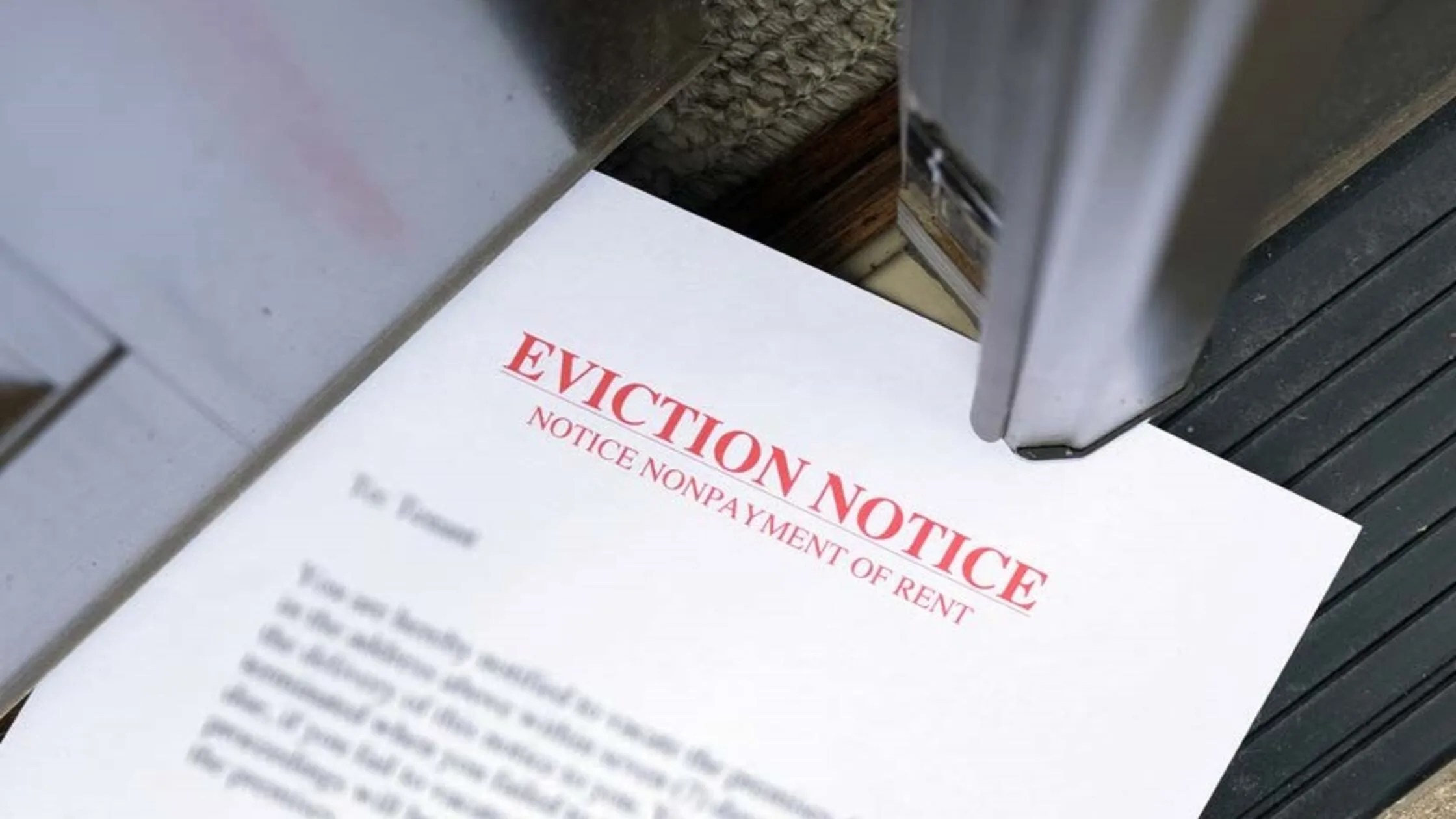
Even the most well-intentioned eviction notice can fall apart in court when small errors creep in. These five mistakes show up far too often and can send landlords straight back to square one:
- Missing required information: A notice that doesn’t include key details like the tenant’s name, the full property address, the reason for eviction, or the exact move-out date is as good as useless.
- Using vague or emotional language: Phrases like “you’re being a terrible tenant” or “I just want you out” have no place in a legal document. Reference the specific lease violation, amount owed, or time lived without agreement.
- Giving the wrong notice period: Some states require 3, 7, 10, or 60 days, depending on the reason for eviction and local laws. A notice with the wrong timeline won’t hold up in court and gives the tenant a chance to stay longer.
- Delivering the notice the wrong way: Think certified mail, personal handoff, or a process server. Use the method your state accepts and get proof.
- Not keeping copies or documentation: Courts don’t take your word; they take your paperwork.
How to Serve the Eviction Notice Legally?
Writing the notice is just step one. Getting it into the tenant’s hands the right way is where most mistakes happen. Each state has its own rules for legal delivery, and courts won’t hesitate to toss your case if those rules are ignored.
Most commonly accepted delivery methods for notices include personal delivery, where you hand the notice directly to the tenant, making it the cleanest and most straightforward option. Another method is posting and mailing, which involves taping the notice to the front door and sending a copy via certified mail. Lastly, using certified mail with a return receipt provides a signed paper trail confirming that the tenant received the notice, adding an extra layer of documentation.
Always document how and when the notice was served!
What Happens After You Serve the Notice?
Once the eviction notice is served, the clock starts ticking. The tenant now has a set number of days to either fix the issue (like paying overdue rent), move out voluntarily, or ignore the notice altogether.
- Tenant complies: They pay up, fix the violation, or move out by the deadline. No further legal action needed.
- Tenant responds or negotiates: Some tenants reach out with payment plans or apologies.
- Tenant ignores the notice: Once the deadline passes, you can file a formal eviction lawsuit (also known as an unlawful detainer) in your local court.
From this point on, everything depends on how solid your notice was. Get that right, and you set yourself up for a clean legal win.
Final Thoughts
Eviction is never a simple process. However, by knowing how to write an eviction notice correctly, you create a smoother path for the steps that follow. For more tools, resources, and expert support, visit LeaseRunner to explore everything you need for confident property management.
FAQs
Q1. What does an eviction notice look like?
An eviction notice is a formal document that outlines the reasons for the eviction, the actions the tenant must take (either cure the violation or vacate the property), and the timeframe for doing so. It includes:
- The tenant's full name.
- The address of the rental property.
- A clear explanation of why the eviction is happening (e.g., non-payment of rent, violation of lease terms, etc.).
- A specified move-out date or deadline for resolving the issue.
- The date the notice was served.
- The signature of the landlord or property manager.
Q2. How to write an eviction notice without a lease?
Even without a formal lease, tenants still have legal rights, and the eviction process must be handled correctly.
- Start by listing your name as the landlord and the tenant’s full name.
- Explain why you’re asking the tenant to leave (e.g., failure to pay rent, staying beyond an agreed-upon period, etc.).
- Give the tenant a specific date to vacate the property, in accordance with your local laws (typically 30 days, but it can vary).
- If required by your state, reference the legal basis for the eviction, such as the “no-lease” or “month-to-month tenancy” regulations.
As the landlord, your signature is necessary to validate the notice.



